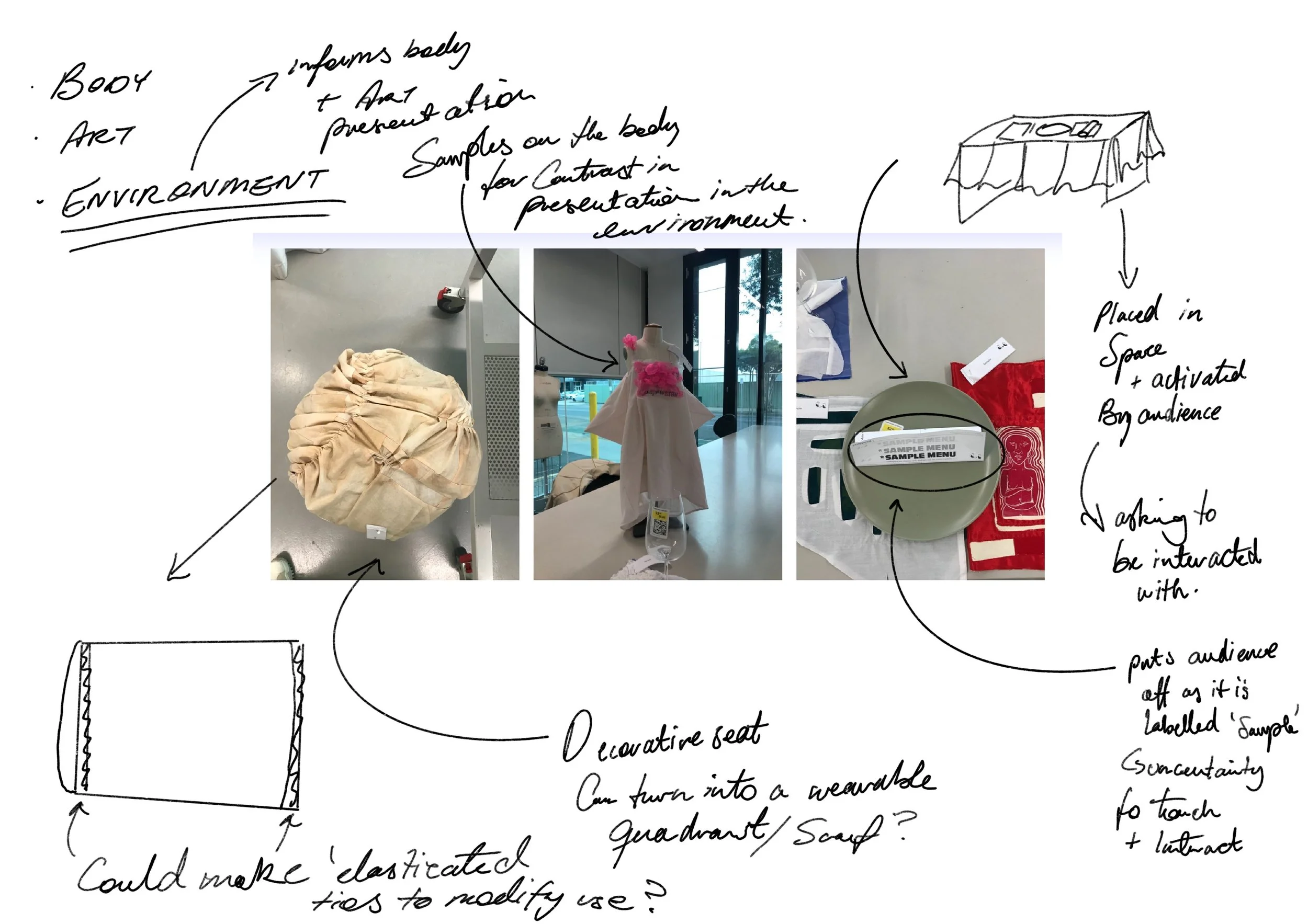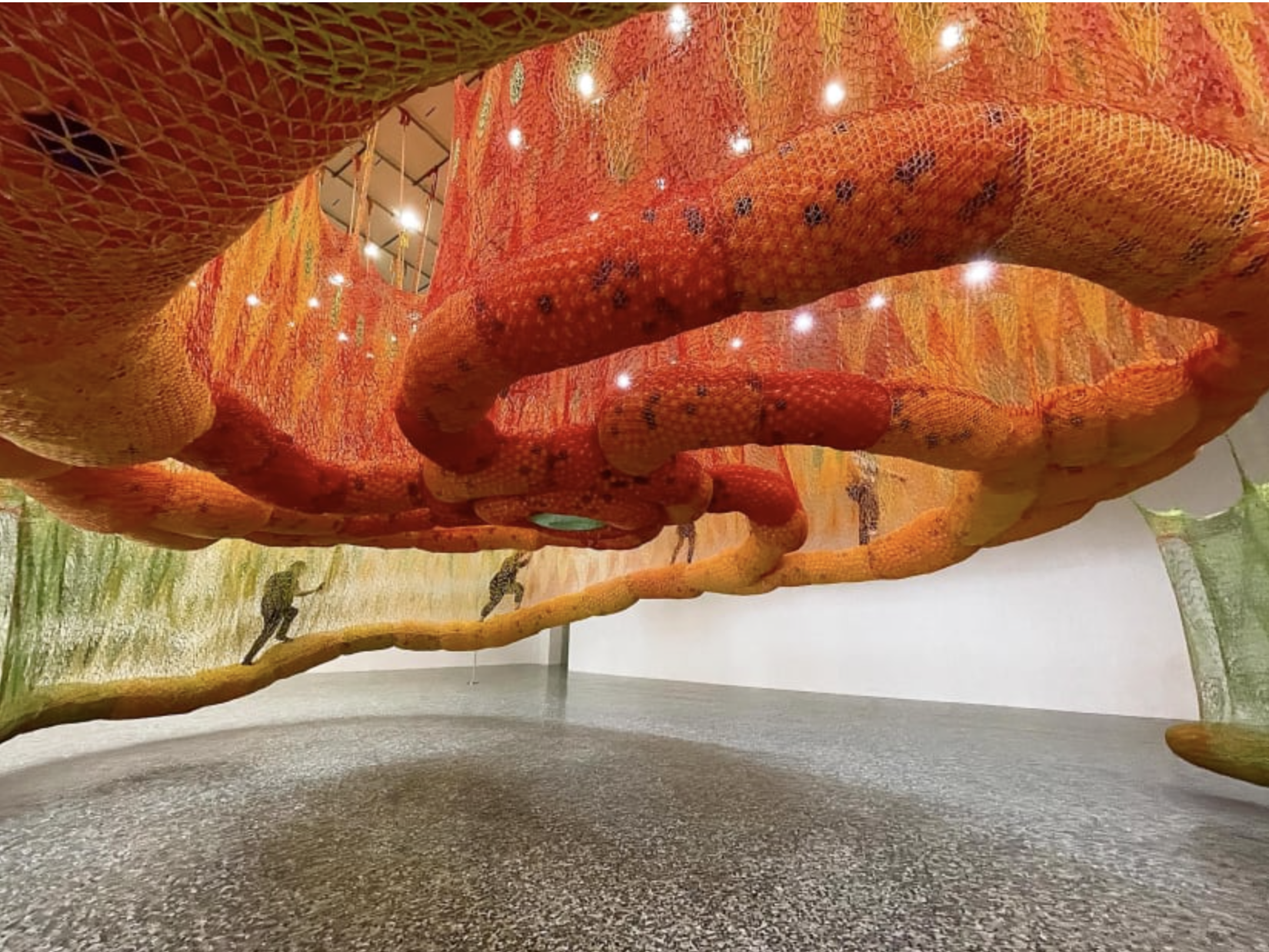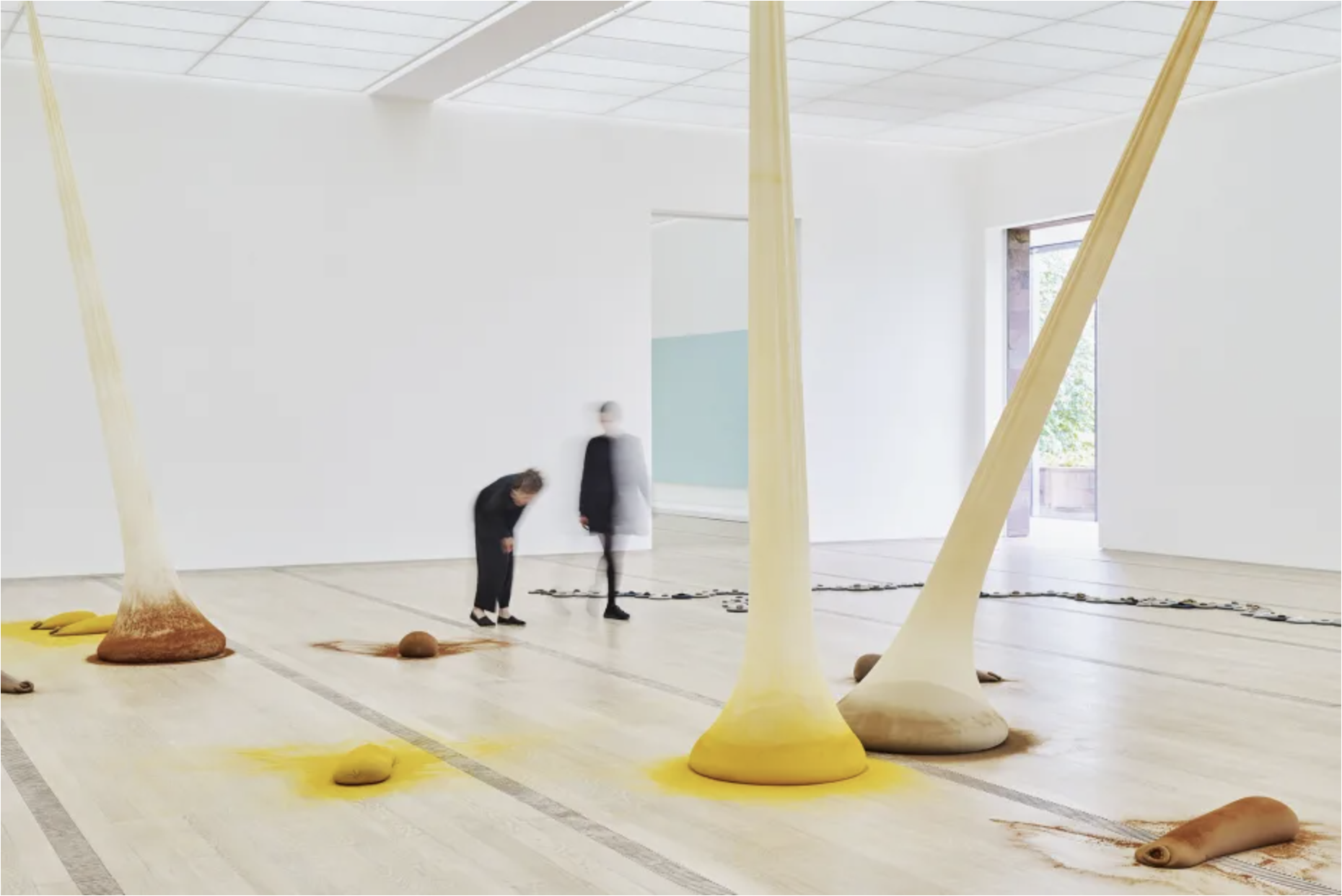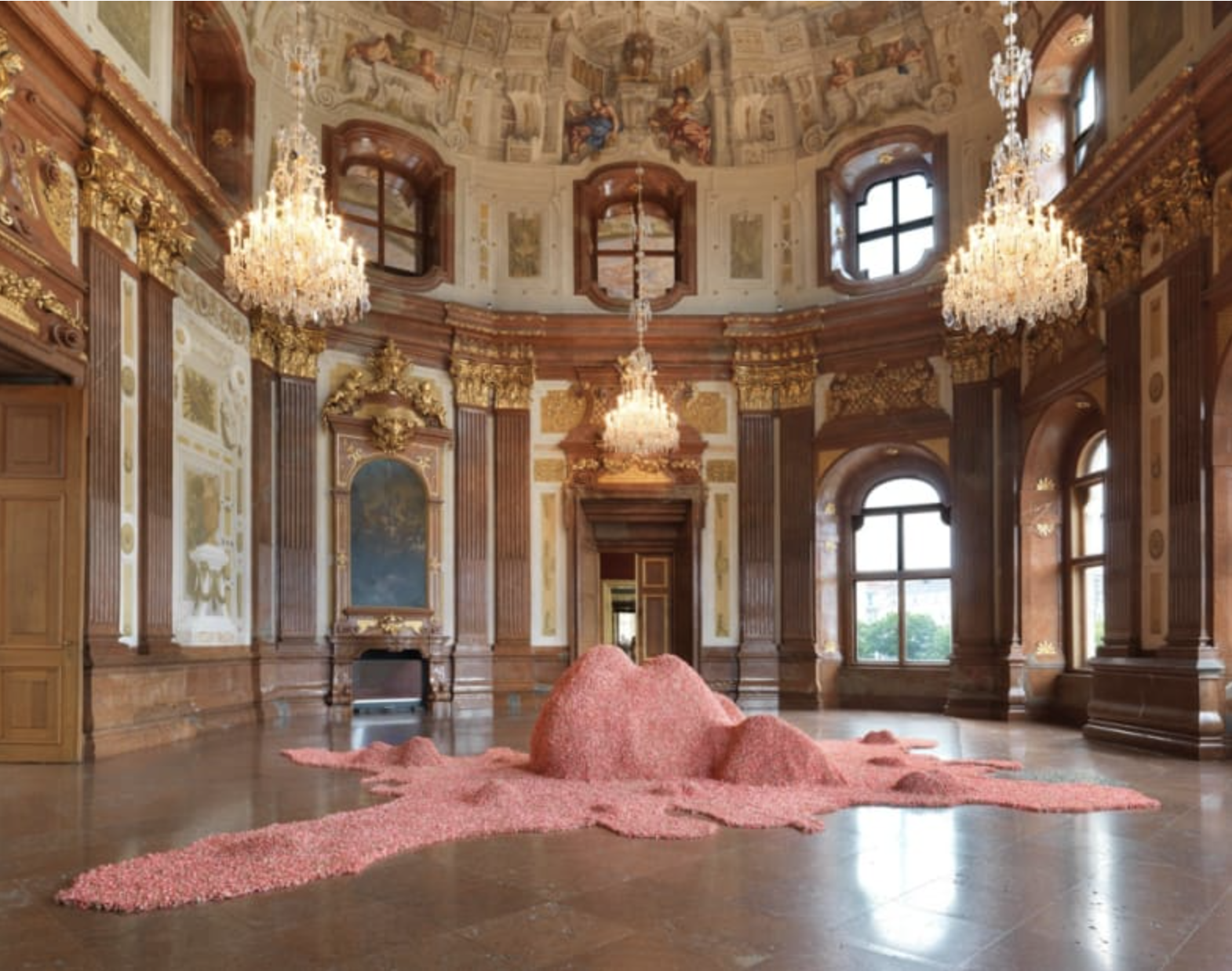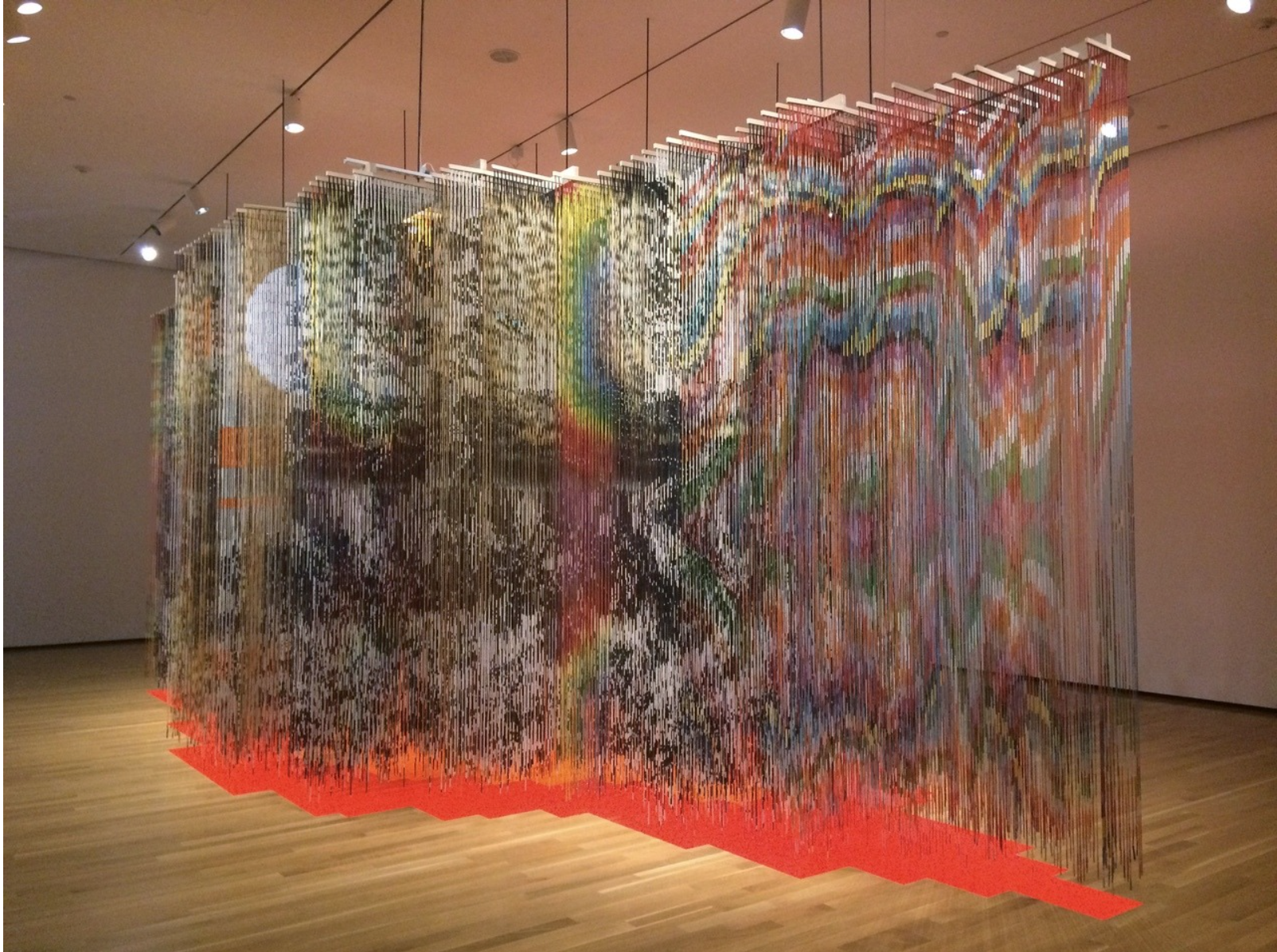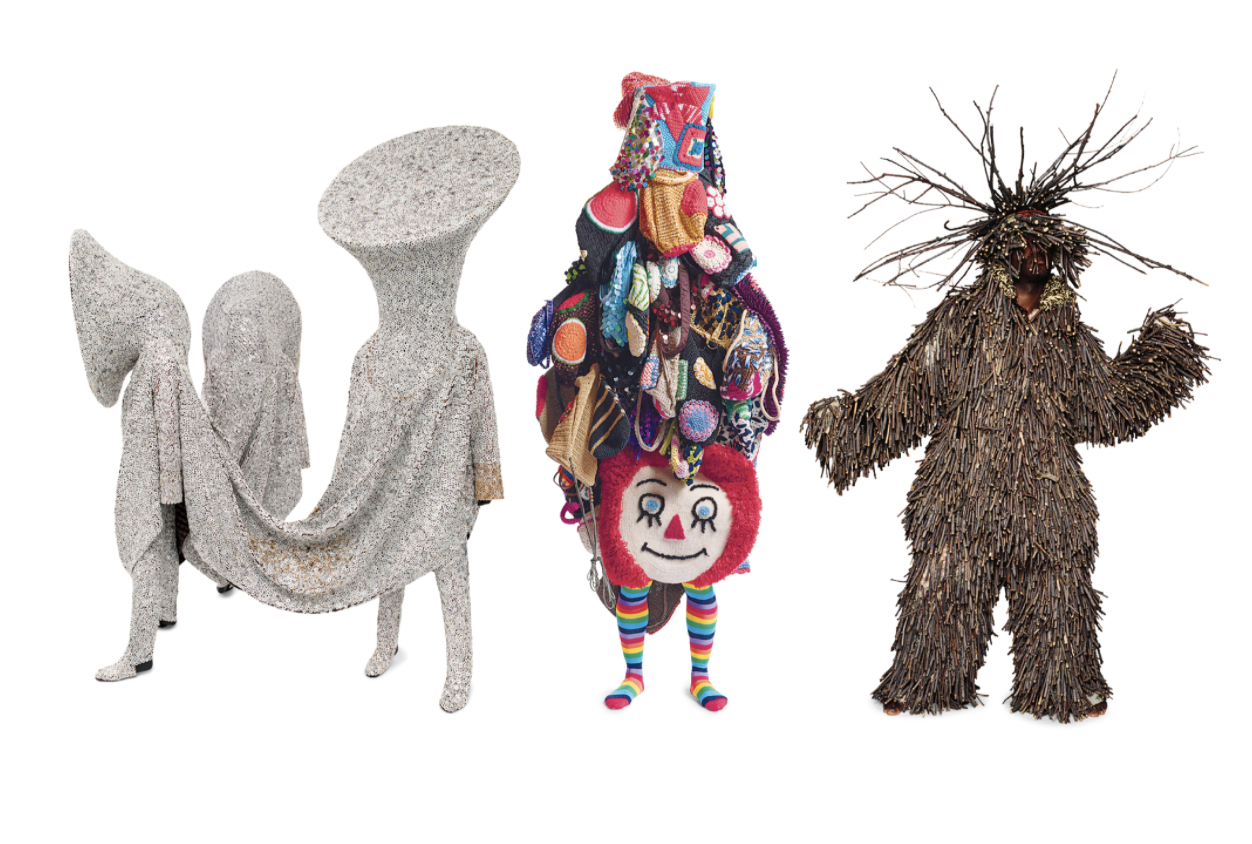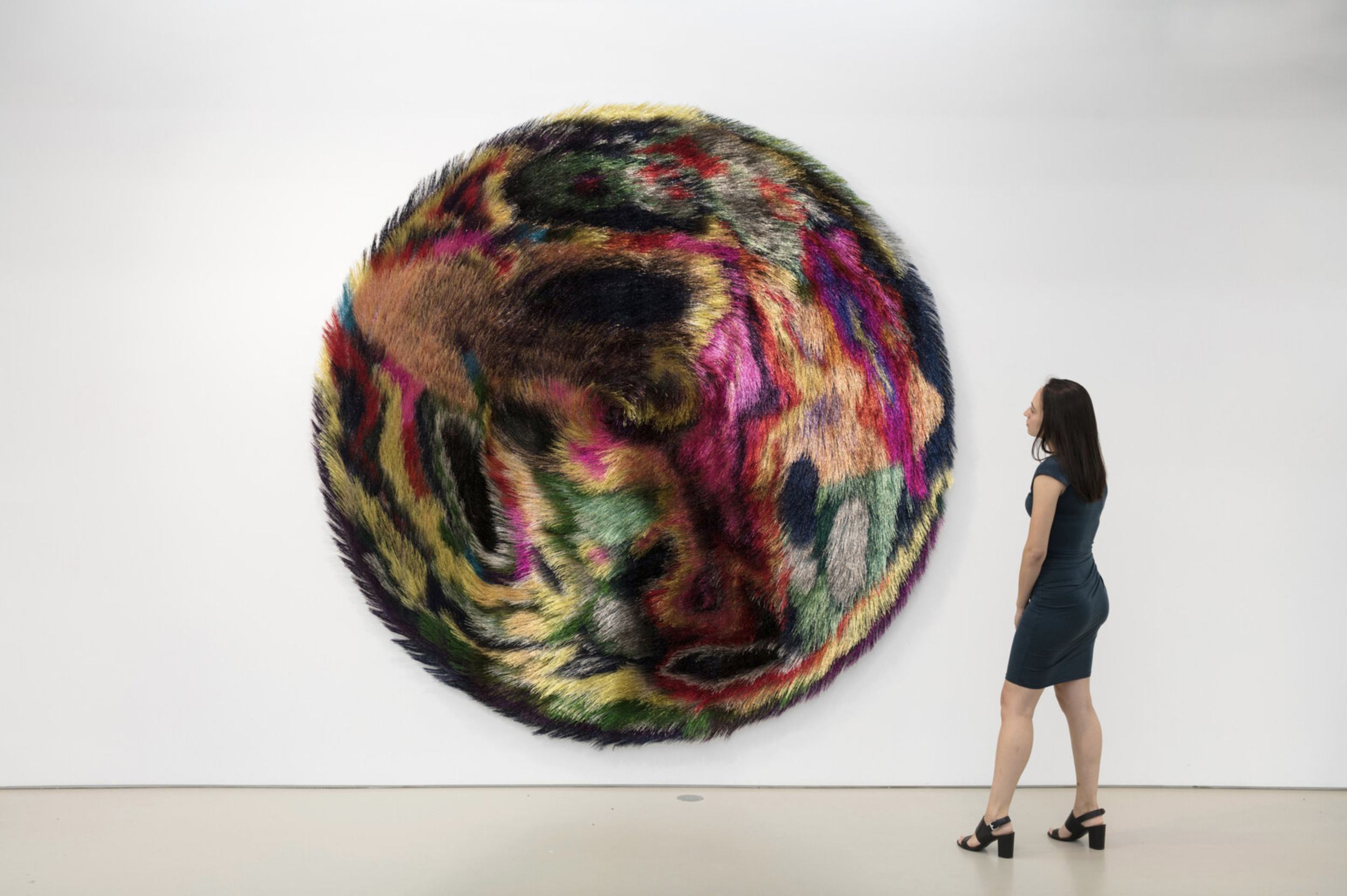In class presentation of swatches
Week 5: Swatches and Next steps into ENVIRONMENT Material Wall
Setting the scene and communicating a space
Throughout weeks 1 to 5 I wanted to understand the correlation between each and every sample, how do they speak to one another, what value do they each hold beyond trial and error, do they hold space beyond a garment and if so what kind of world do they exist in?
I wanted to set the scene and bring the class to the “table” to discuss a space and view what was on the menu. This action was meant for an interactive display of art, body and environment, played out in a space.
By inviting the audience into this scenario, I was able to bring each sample to life and breathe in narrative and purpose to each garment, as spoken in “is jewellery luxury” - I too was communicating wether samples and idea trials were of value and do they challenge or change a space.
In turn I found that Yes, they indeed do. They alter and enhance the mood and feeling of a setting/ space.
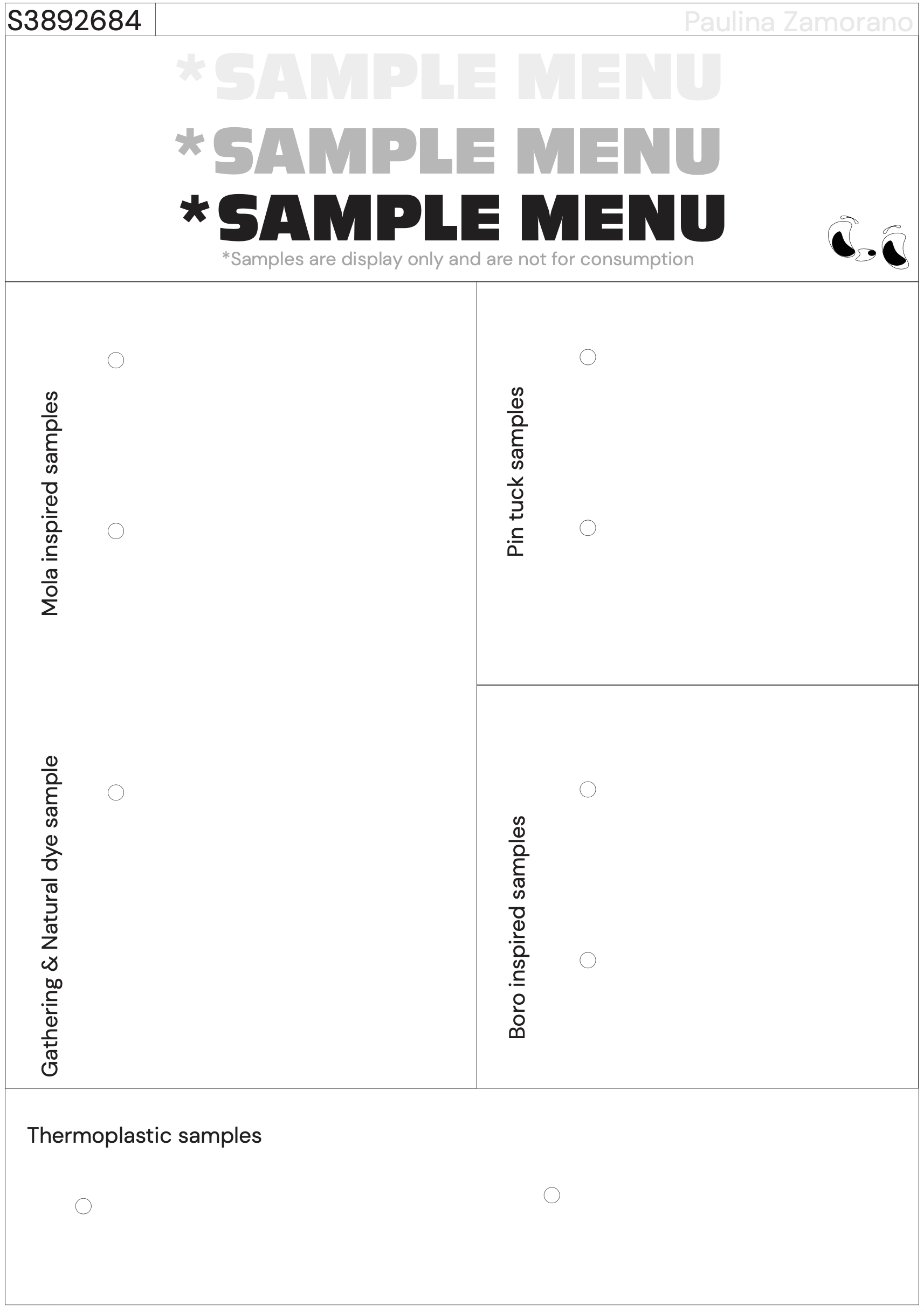
Sample menu: Used to communicate what is to come from these ideas - I interpreted this presentation into an art installation where the class (audience) formed apart of the progressive growth of a "sample" performance prior to the final work being served
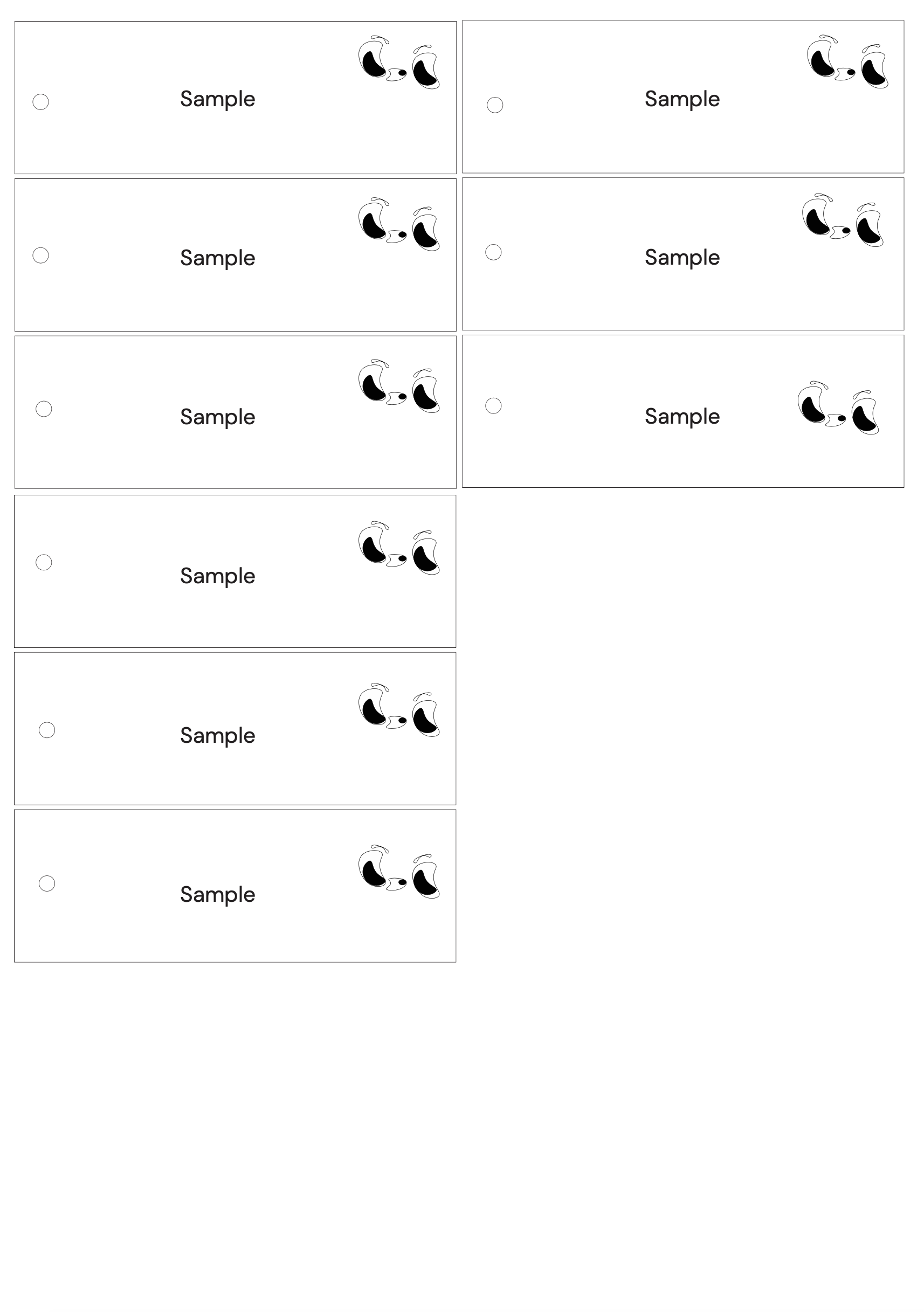
Sample tags have a set of eyes (my logo) to further enhance the environment and spacial awareness - Be careful, do not touch sentiment
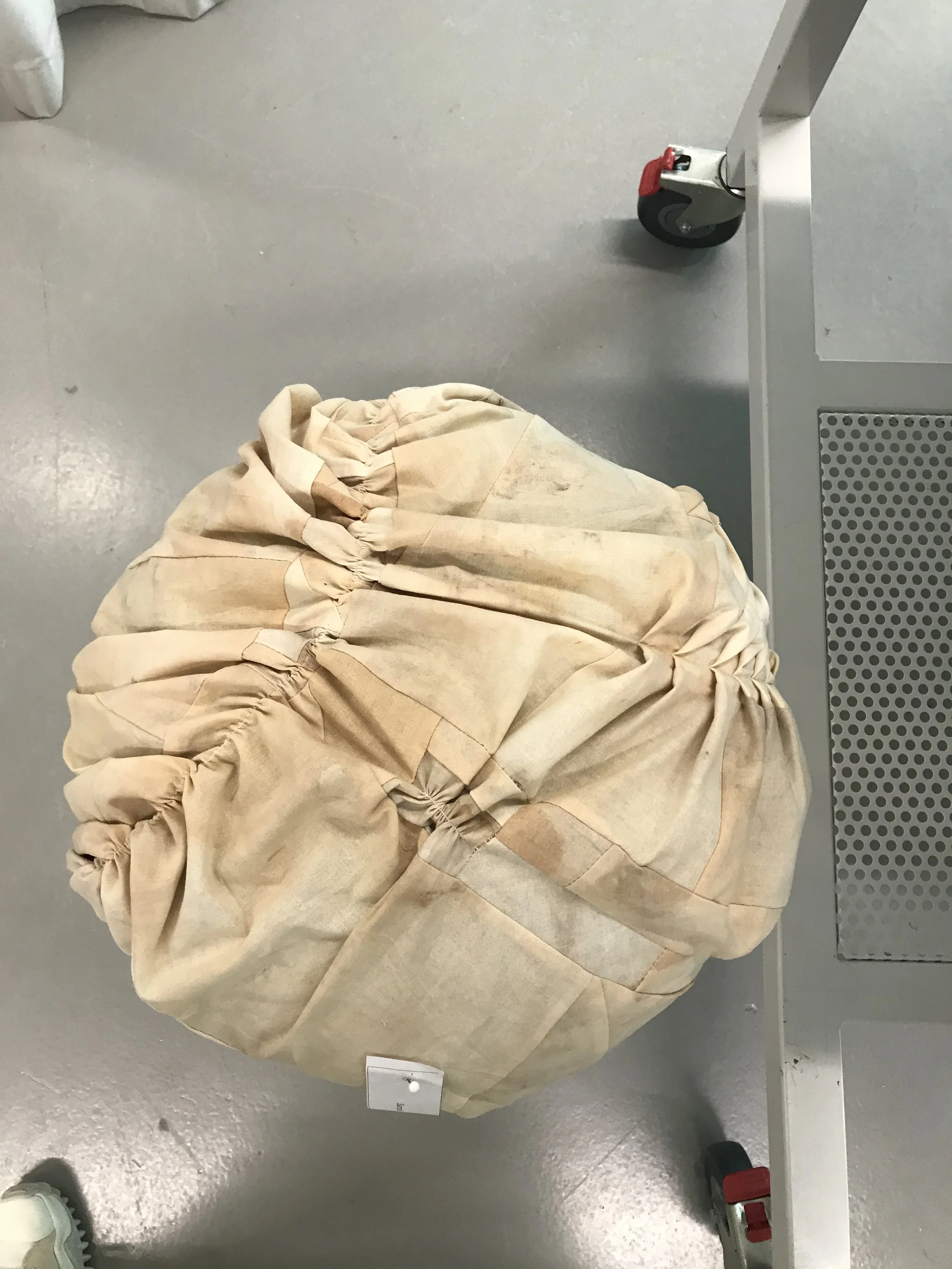
Mushroom like chair found in the AS is section of Ikea, draped with the natural dyed sample tapestry that was gathered in various areas and retains a series of pintucks and mexican pleats
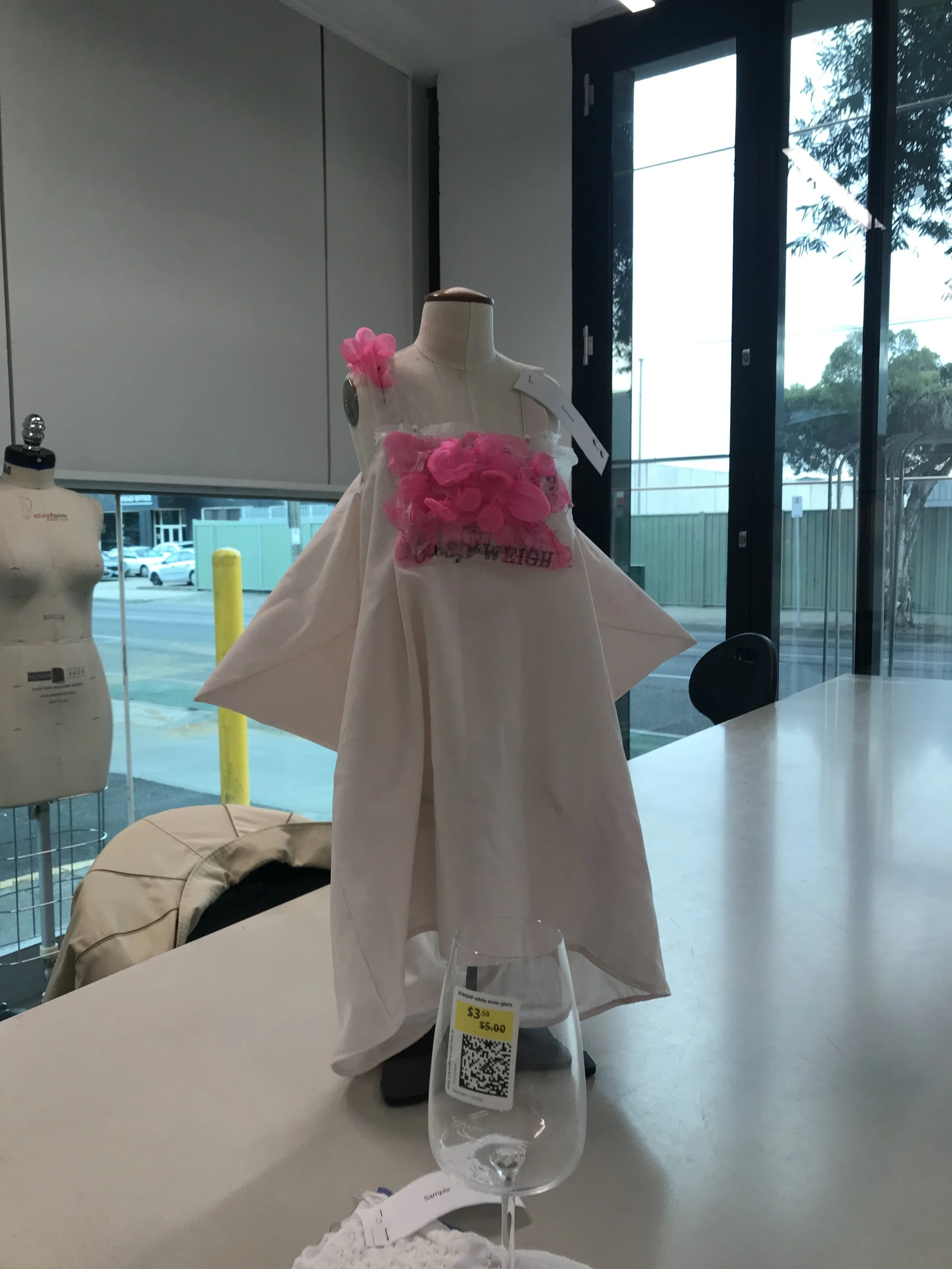
Issey Miyake dress and shibori samples draped on the 1/2 scale mannequin - Decided to display this sample as is to give context to the concept overall, however I do think that my quadrant will move between the body and furniture/ environment

The dinner is set, the table is ready: from left to right. Mixed canvas and cotton Boro sample used as a cup holder for the wine glass, Velveteen and poly cotton Mola sample used as placemat for the plate and "sample" Menu, Sateen and canvas Mola sample displayed as secondary place mat along with the 'Napkin' pongee sample to the right
Boro shawl, scarf and adjustable fabric pulls can wrap over furniture item to alter the aesthetic display of your surroundings
GARMENT LIKE QUADRANT: features a series of stuffed rounds attached to a quadrant of cotton, designed to fit at the shoulders when placed on the body, quadrant to drape from the body. Quadrant can also mould to furniture and change its aesthetic and comfort, attaching the quadrant with ties to the furniture item. Finally quadrant can turn into art, draped or tied to any canvases and displayed.
ENVIRONMENT
Space, place, belonging, community, self - words that I relate to environment
What does environment
mean to you?
Space, belonging, locality and sense of place. beyond the exterior sense of environment, it can also be the beginning place of ideas, where concepts and value of materials are nurtured and given a sense of value
environments are homes of thought where theres always a repercussions for actions taken within those homes
overall message - Environment is bigger than the external world as a whole, it is used to generalise the individual ecosystems that live within the space in which effects our ecosystem as as a whole.
What does environment inform Fashion?
From weather/ seasonal temperatures such as high heat in dessert areas to snow and below zero climates, to dress codes and formal occasions of dress, to utility requirements such as dish washing, to political climates that require make shift housing and accommodation solutions. The physical, sociological and political environment around us inform the way we require, use and adapt fashion to our needs of the every day. Fashion is required beyond the glitz and glamour, it is required to sustain and envelop environments that require various modes of dress and use.
What does environment inform Fashion?
My first thought goes straight to potential protests on the runway such as Viktor and Rolf’s SS19 where models wear exaggerated silhouettes with bold text communicating “I want a better world” as political and social statements that not only inform environment in a literal sense, yet also challenge environmental thought.
whilst fabric made from Coconut Coir lends itself to retain/ be a vessel or direct the growth of plants in a controlled environment, thus enhancing and informing the growth and development of landscaped environments.
Consider your physical environment, what surrounds you? What are the types of materials you can see?
Within my home I am surrounded by materials such as plaster (walls), stone (countertop) wooden furniture pieces (beds, Dinner table, side tables, coffee tables), ceramic tiles, MDF doors, metal appliances and handles, leather (couches) poly-cotton dish washing cloths, cellulose/ nylon dish sponge, suede (couches), wood (cup holders), Glass (windows, table tops, splash back, shower screens), wool (rugs), Cotton (Bed linen and sheets), Polyester (Duvet).
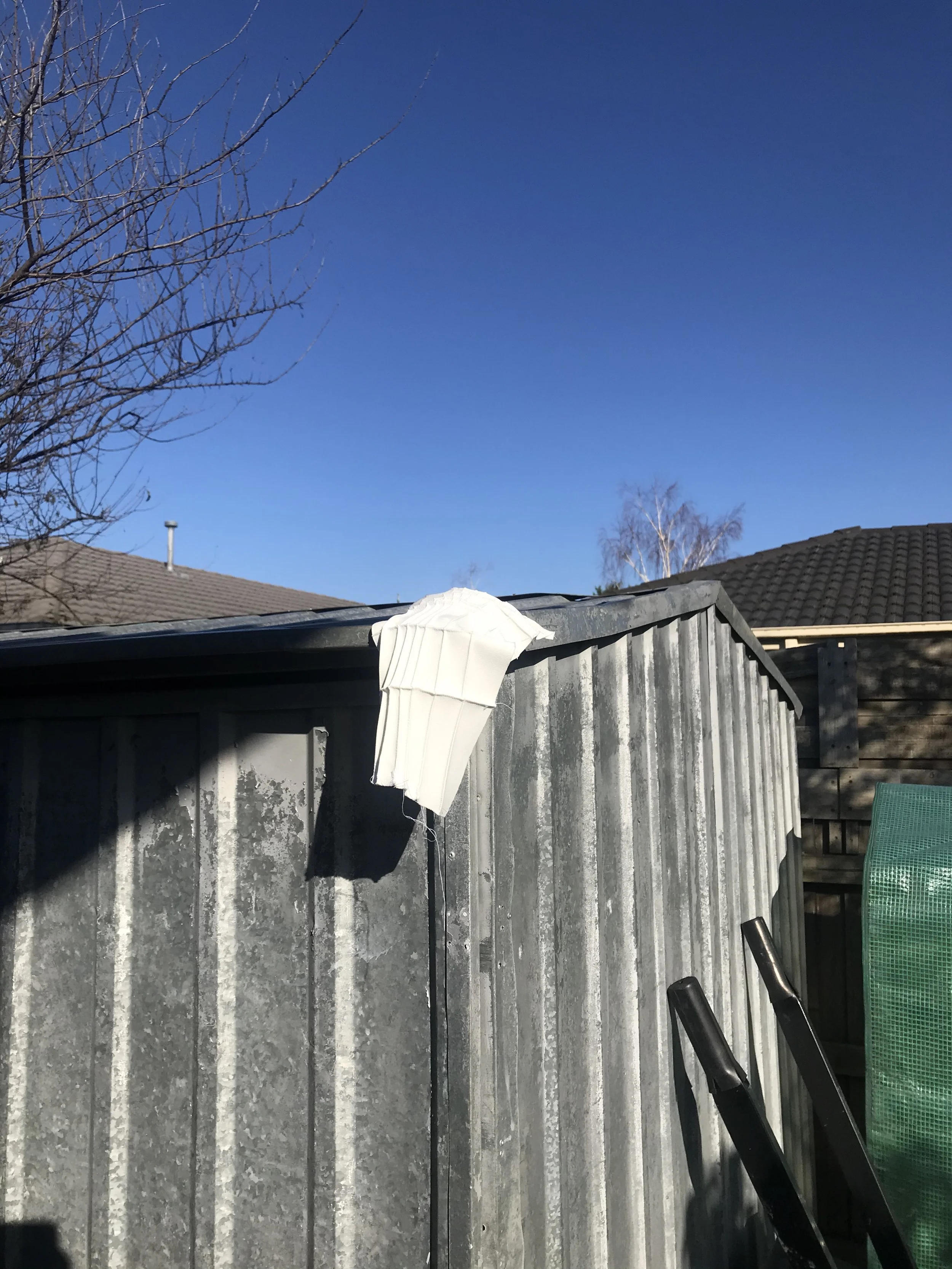
from a hard metal shed turned soft and floppy silhouette
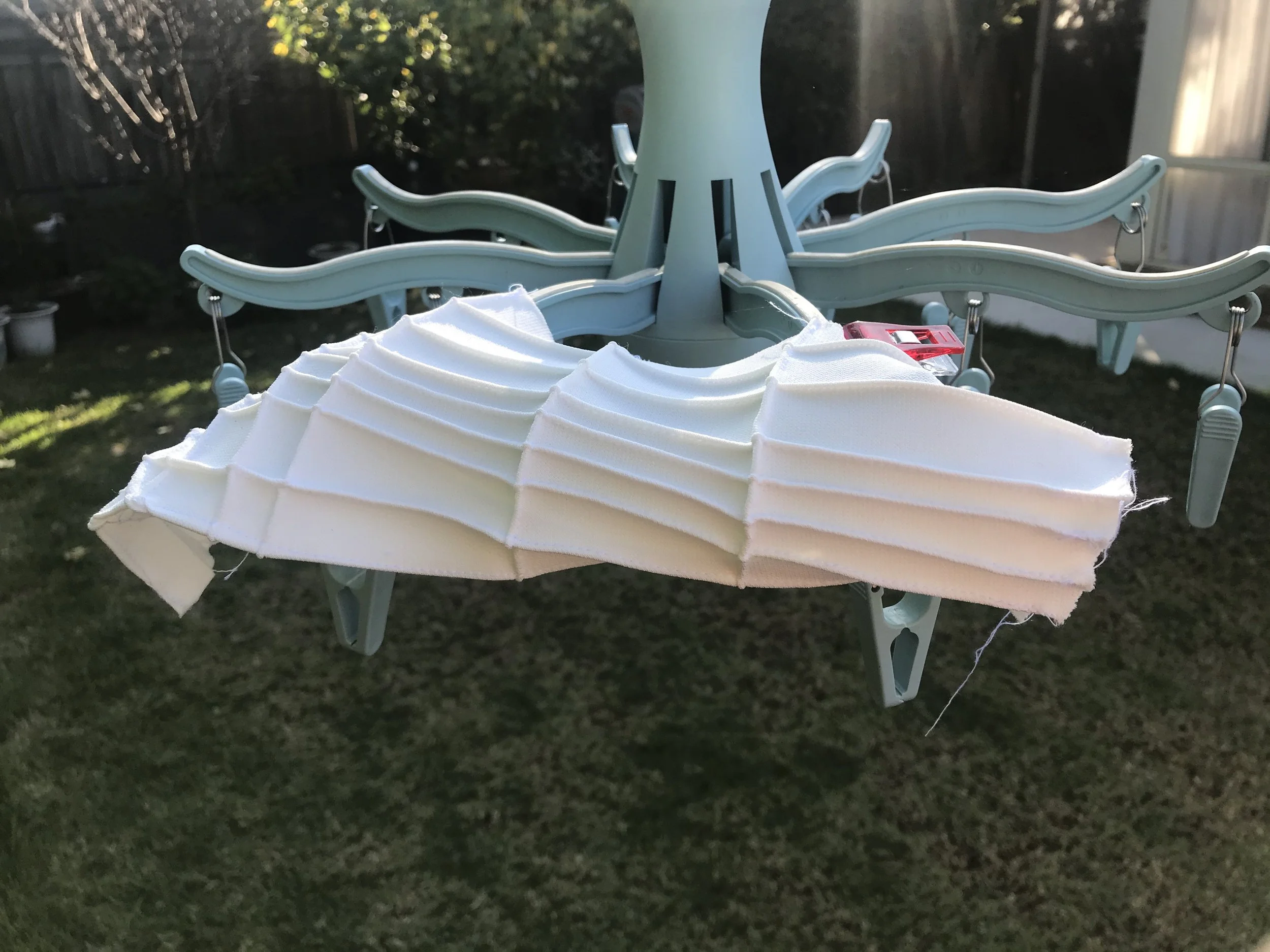
Covering the "sock" hanger, creates for a floating pendant silhouette
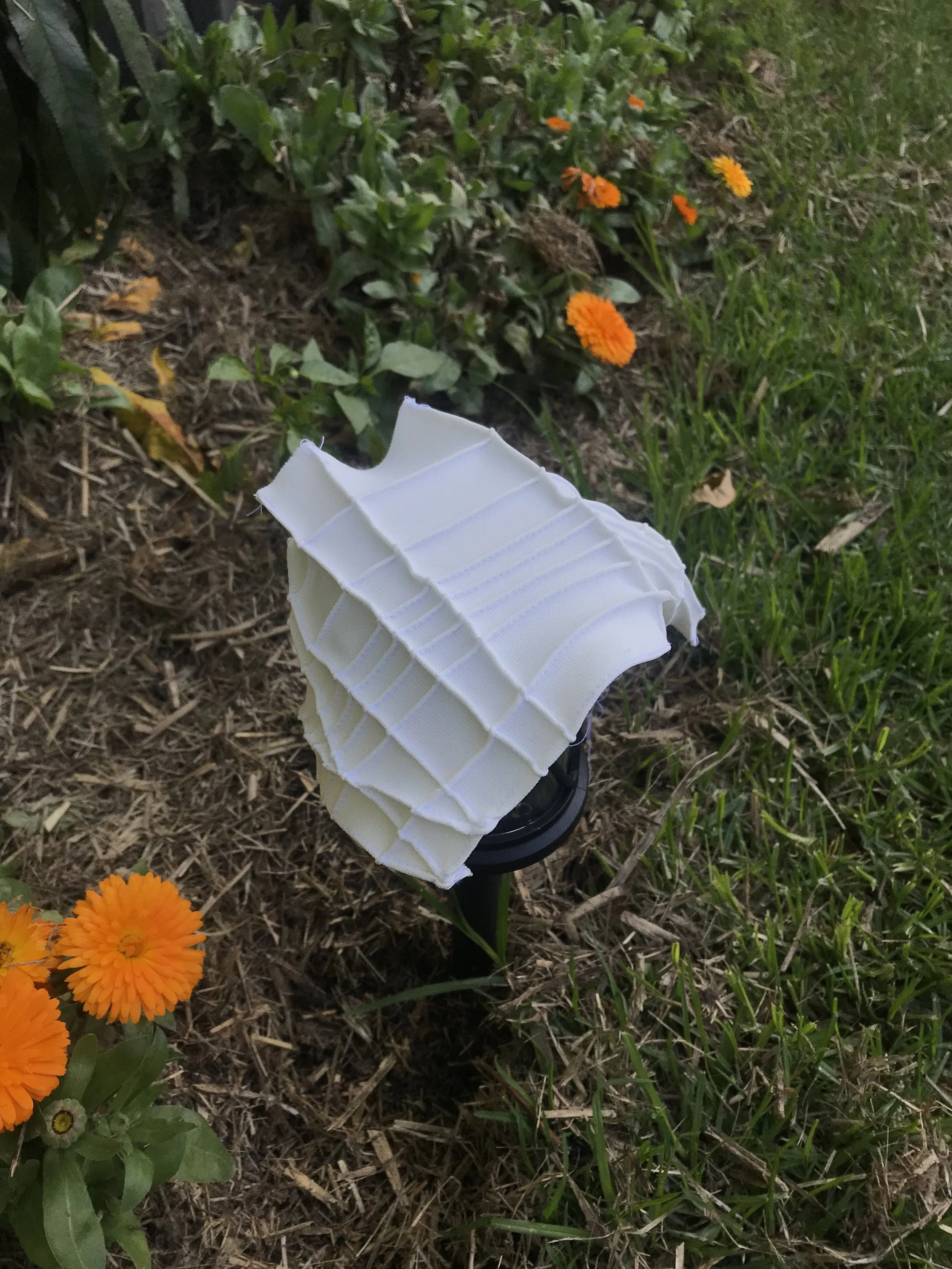
soft garden light
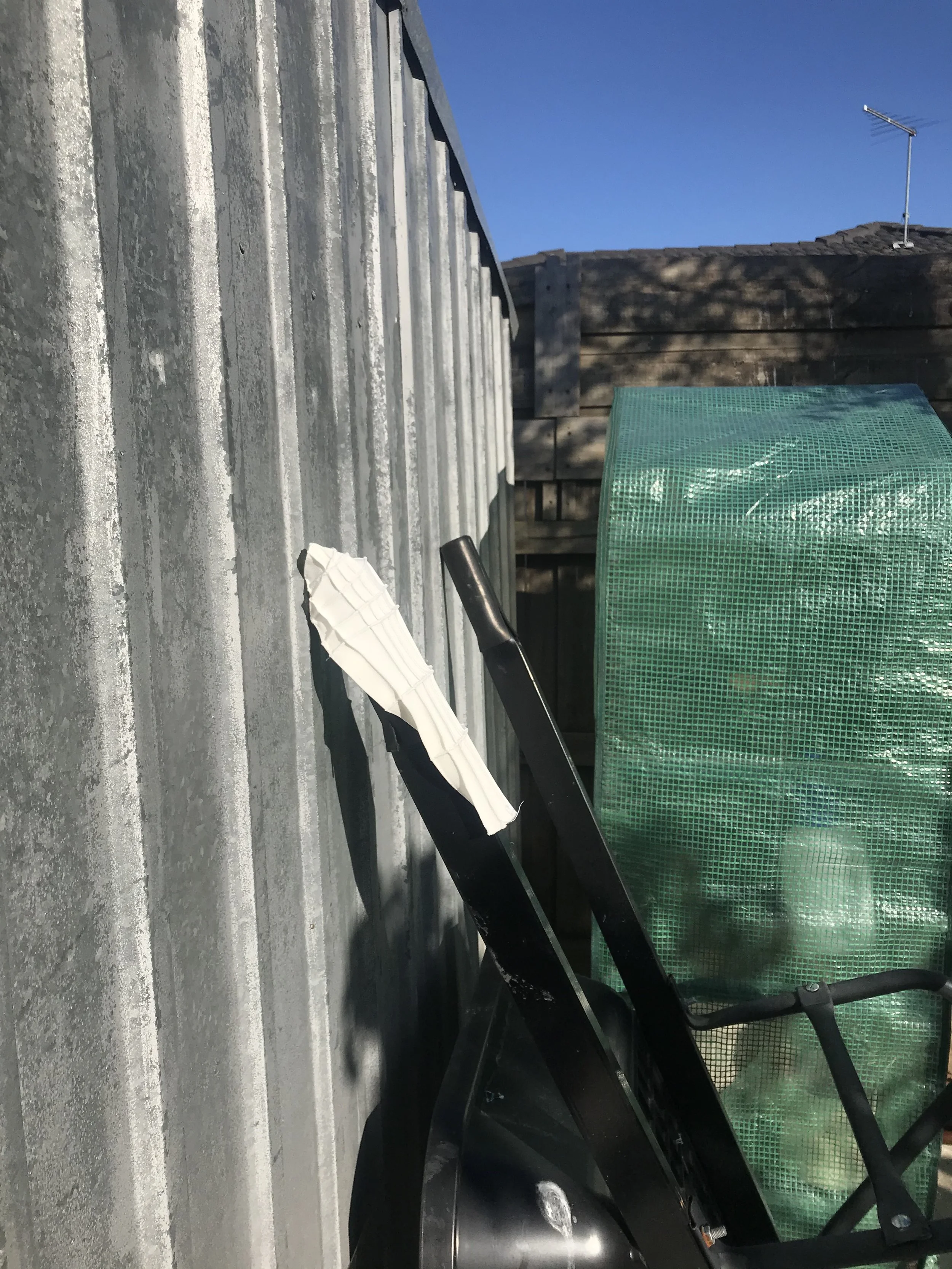
Pongee sample hugs the wheelbarrow handle so perfectly - instantly softening the hard metal silhouette
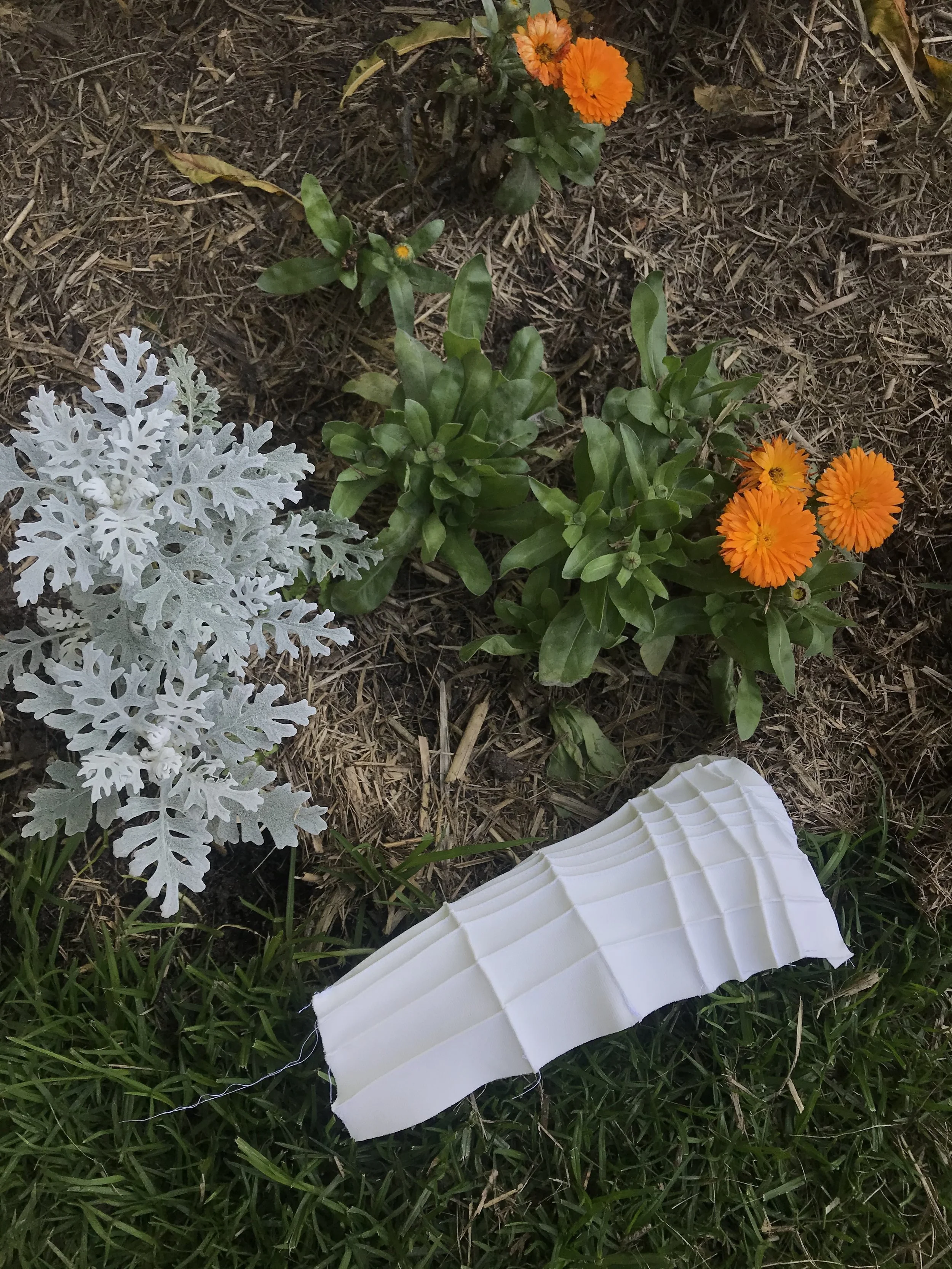
soft grass corner, swatch hugs the grass at it's edge, fashioning the garden scape
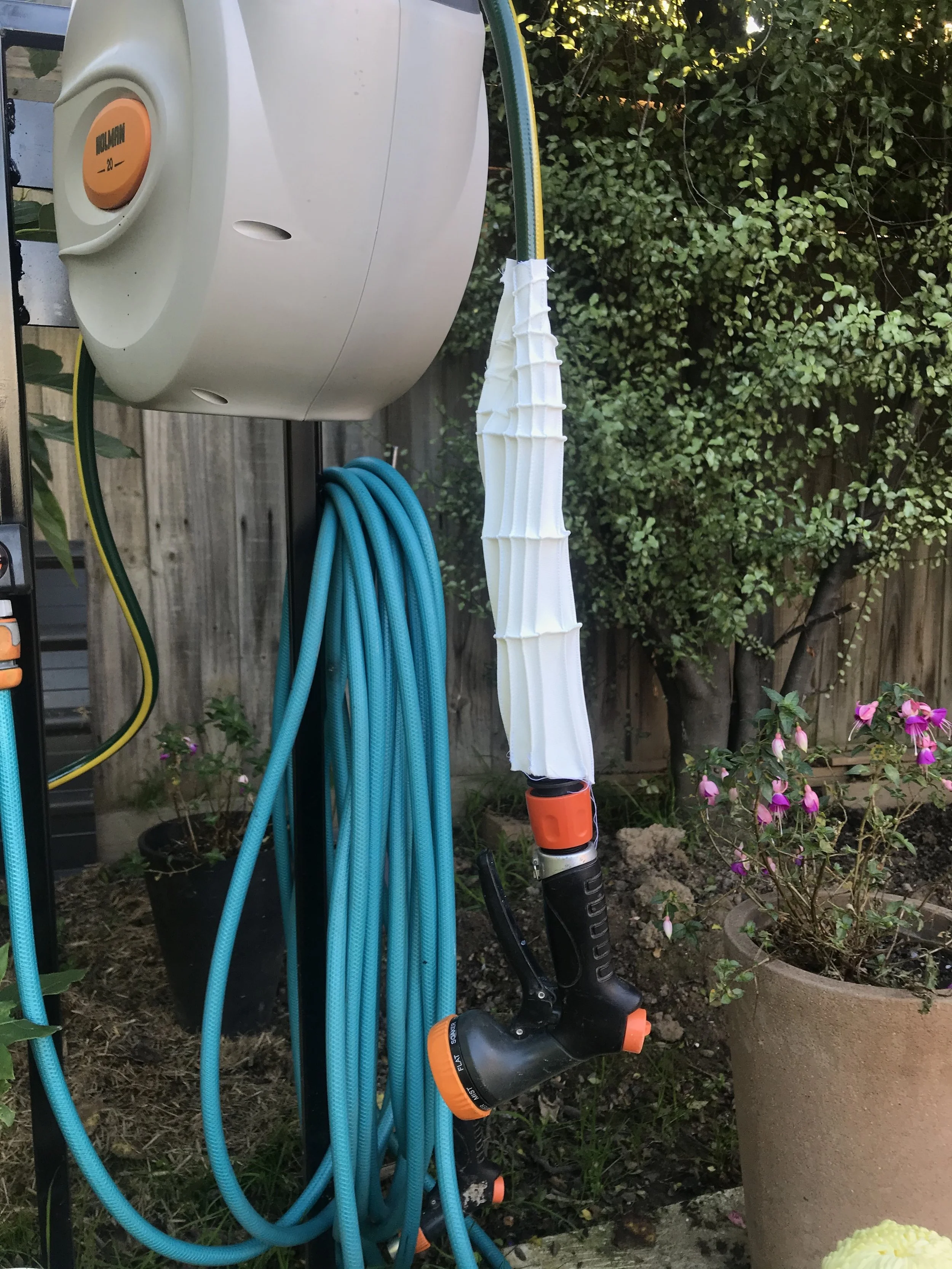
Linear pin-tucks accentuate the direction of the hose pipe
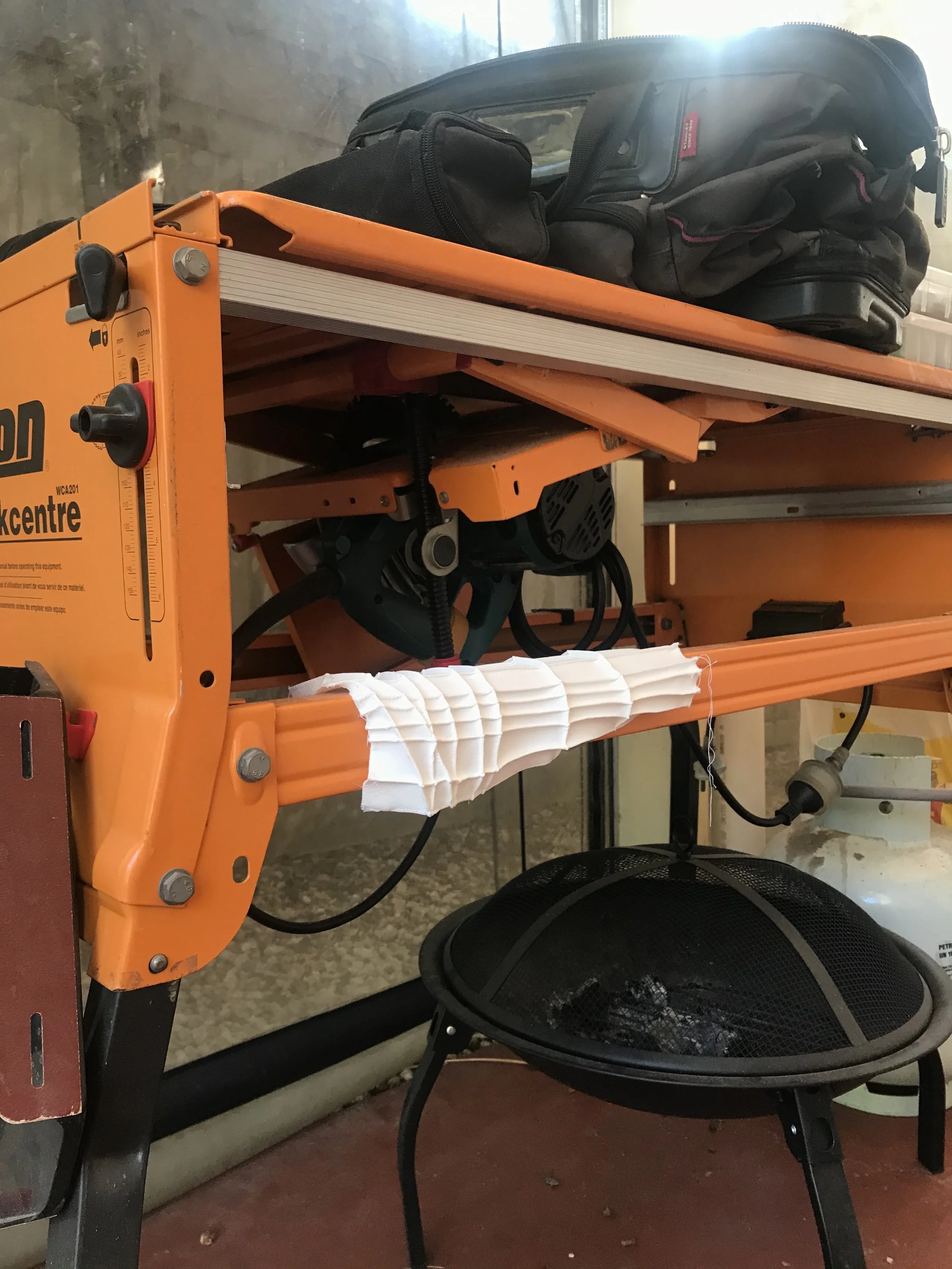
softens the structure of the table saw
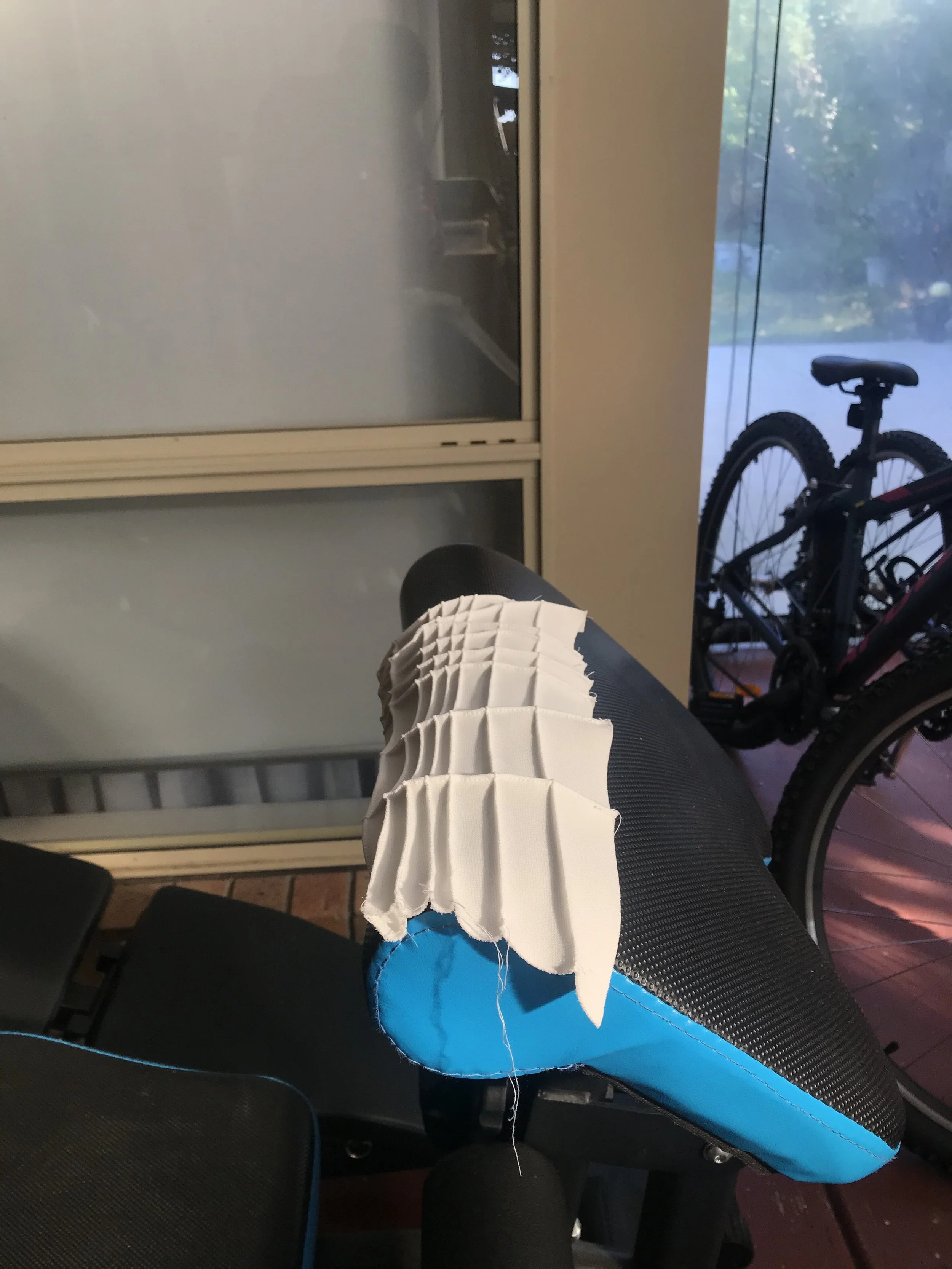
decorative effect that would affect use of padded bar
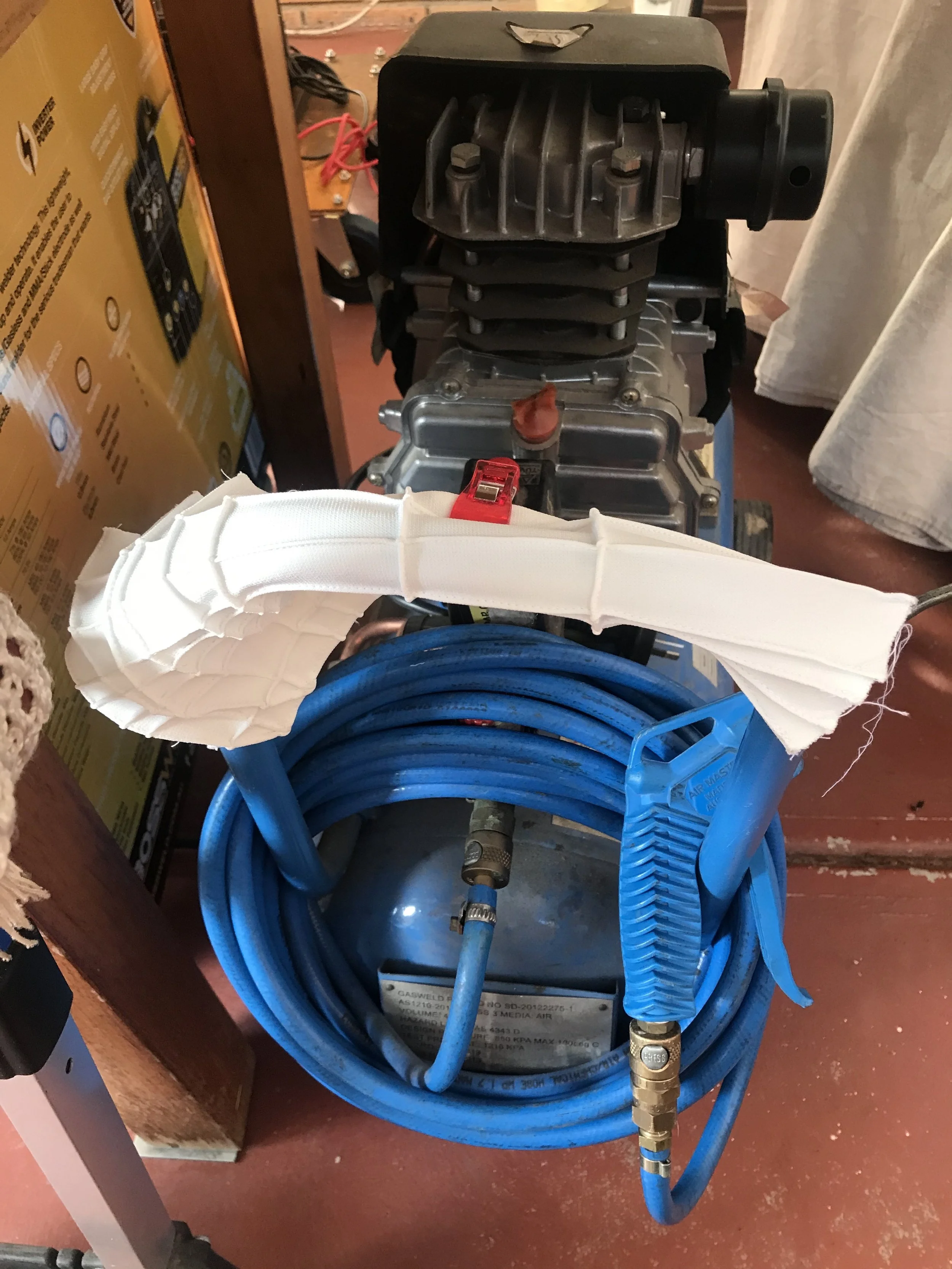
hugging the handle of the air compressor. structured yet soft - sample enhances the point of contact between user and machine
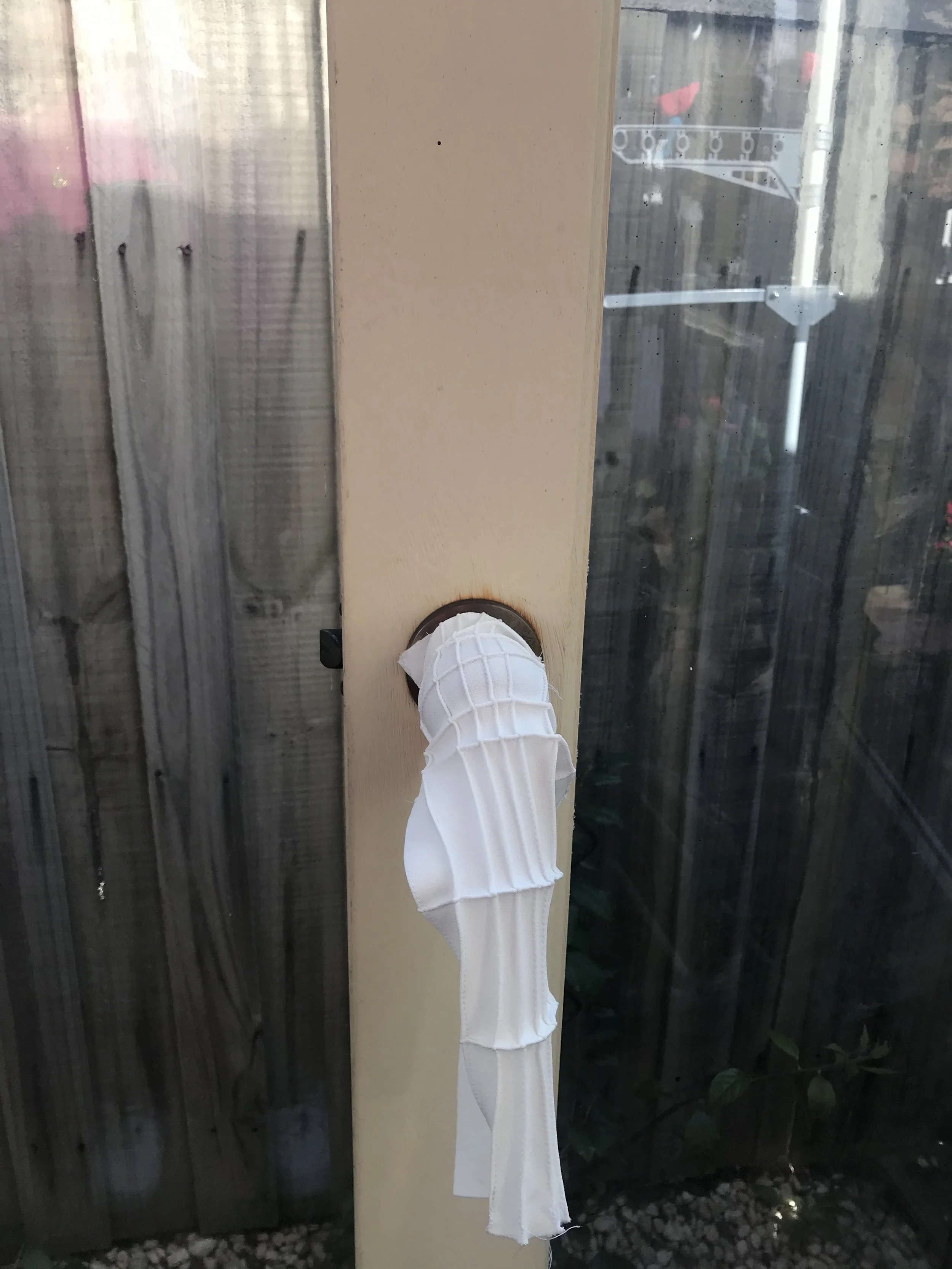
Extended the silhouette of the door handle
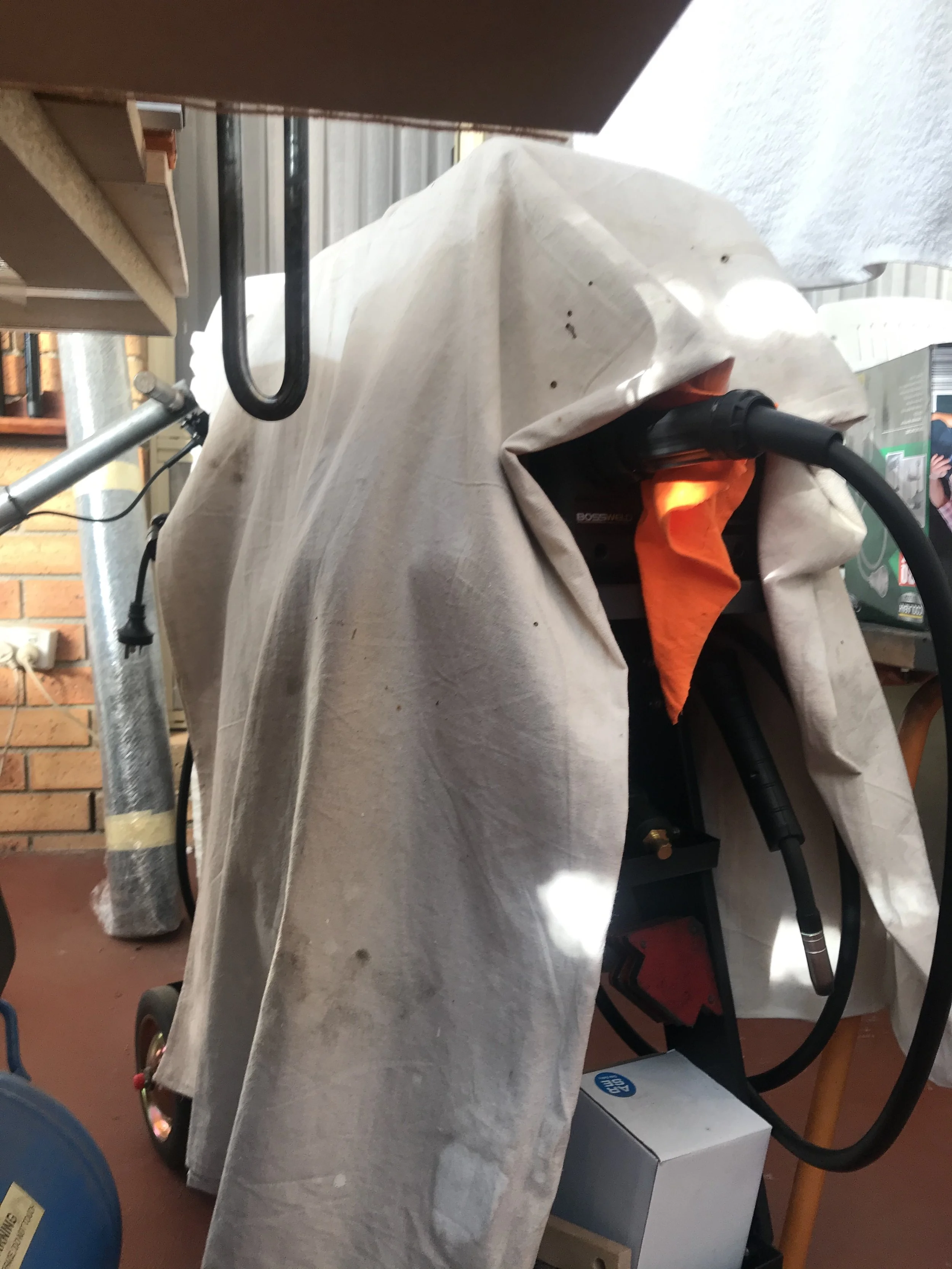
covering tools at home sparked the idea of hugging objects making them "soft" or contrasting their product intention
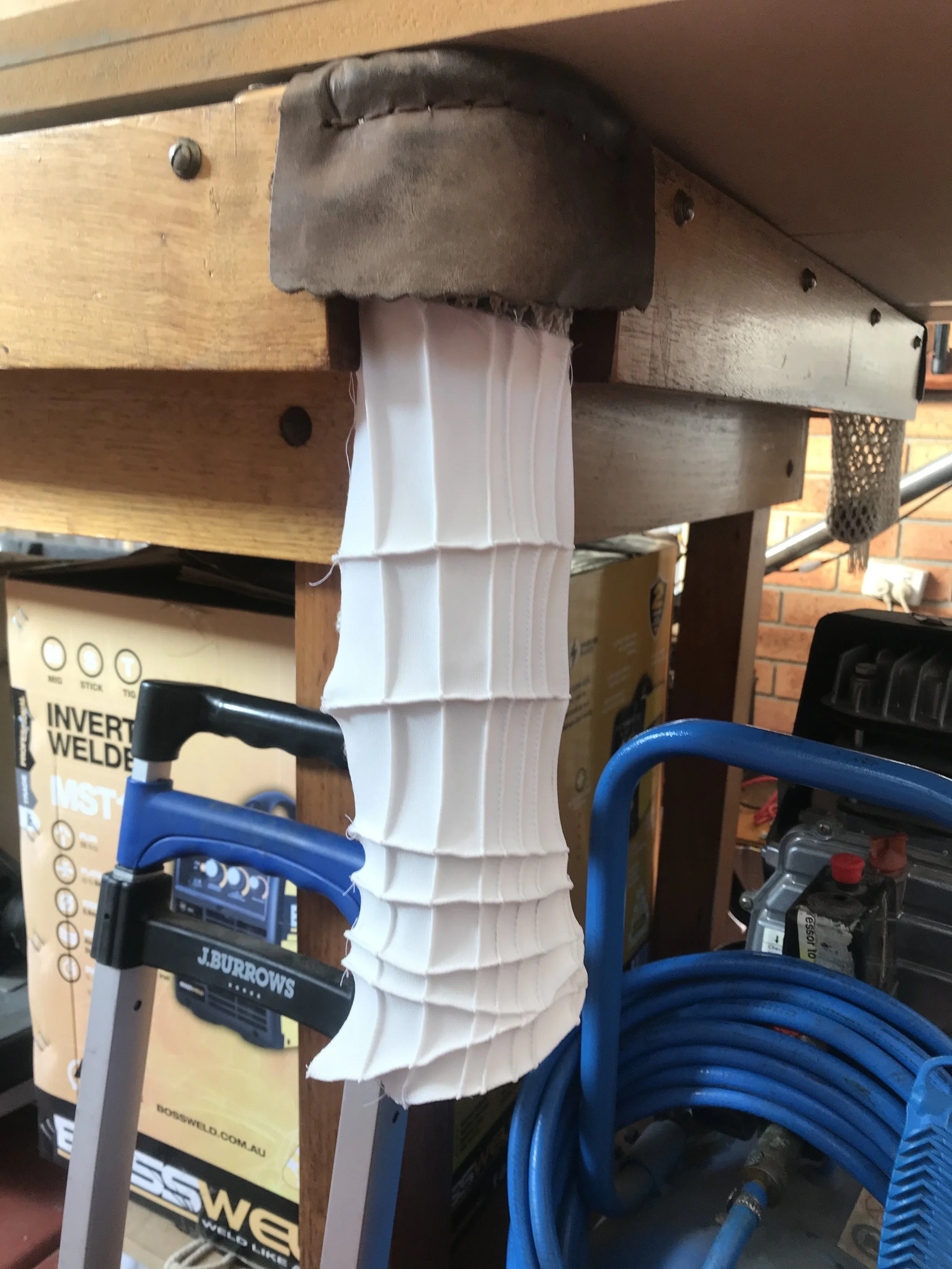
Pool table ball catcher - sample creates a "structured" and stiff appearance - contrasting use
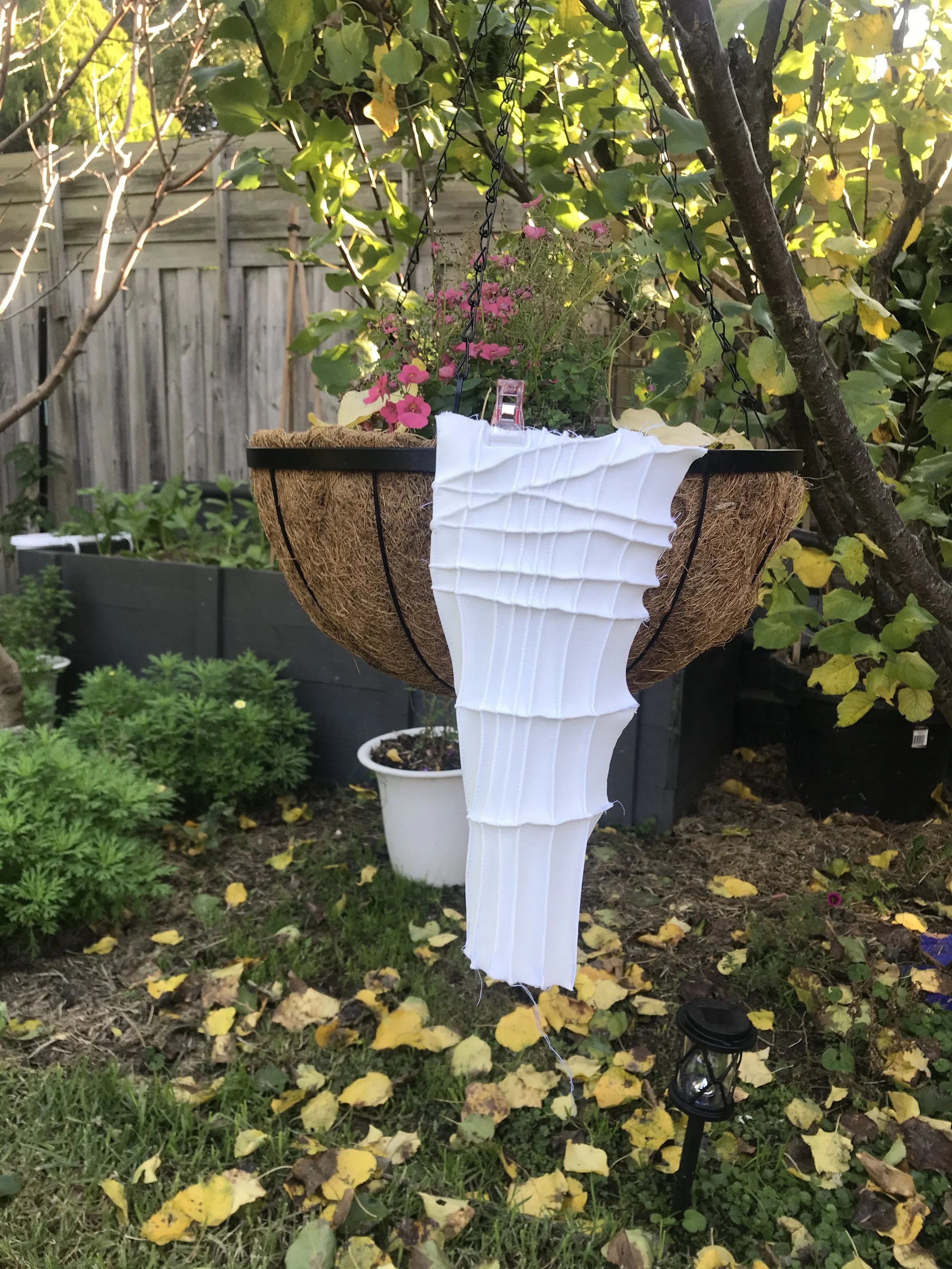
From coconut coir to pongee sample, challenges decorative vs functional and environmentally positive construction
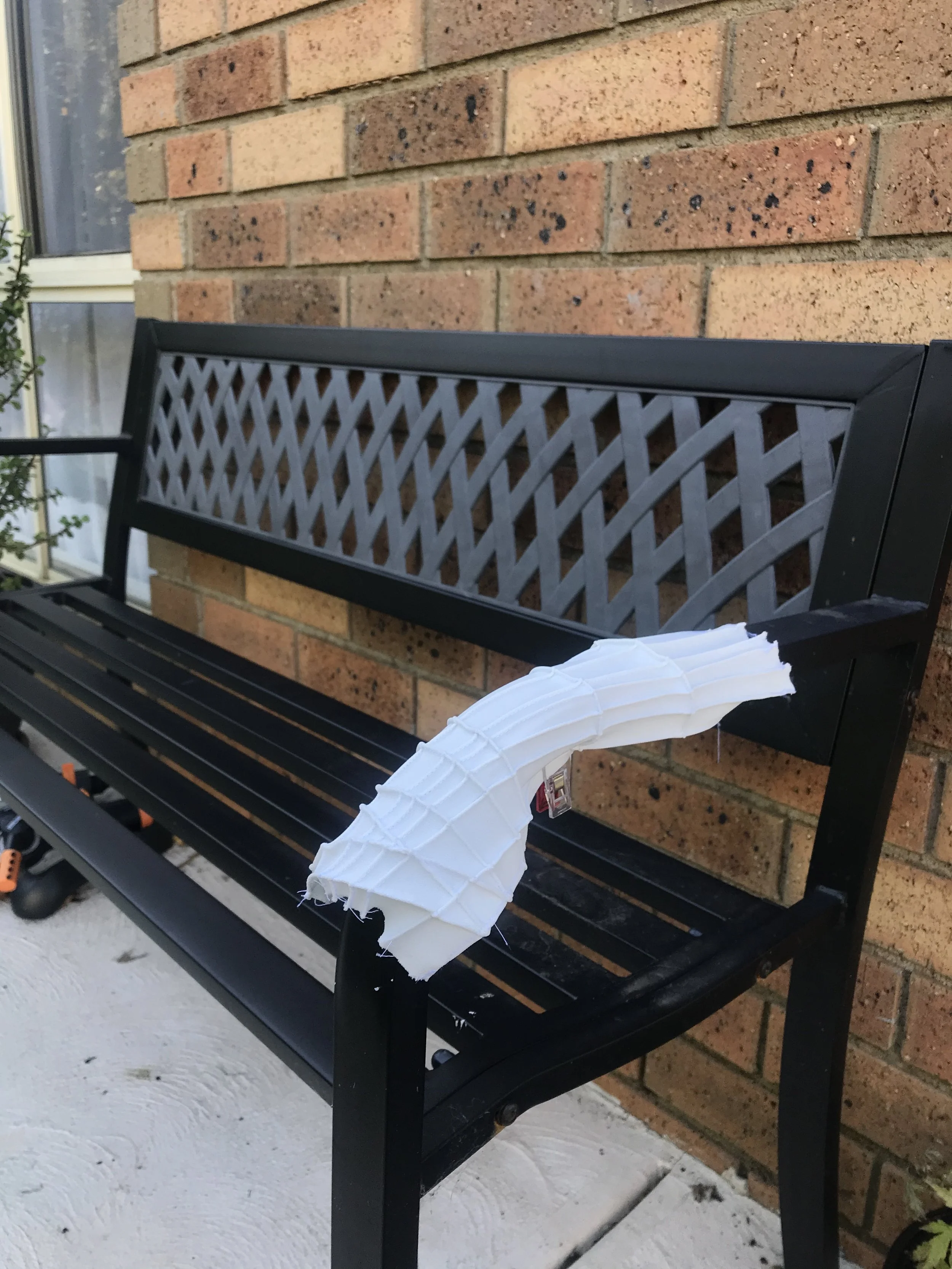
padded outdoor chair - or whole chair with sample - changes relationship of object and material in outdoor setting
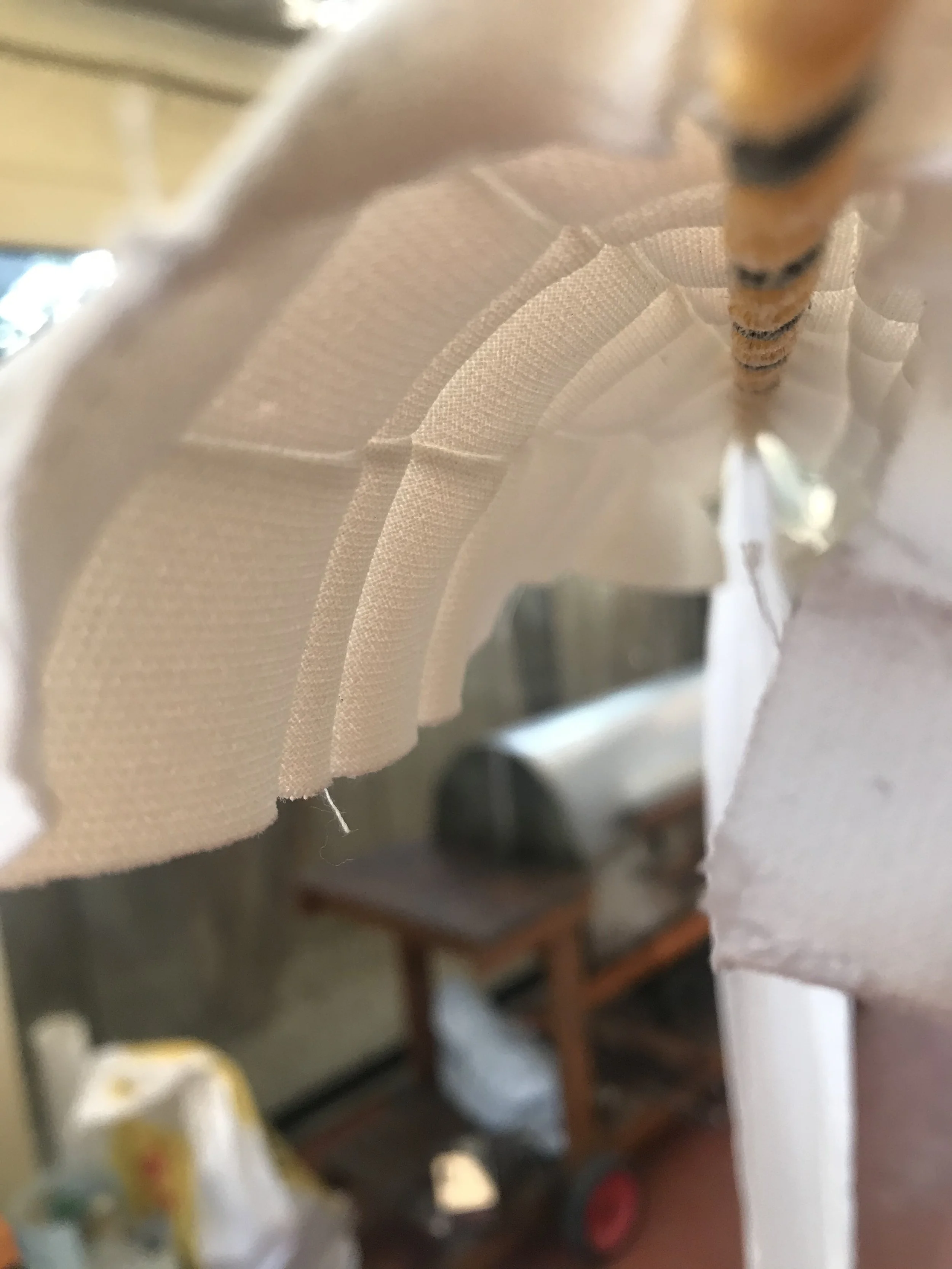
Internal perspective of sample, changes experience of sample - interior outlook
Don’t tell me fashion is frivolous
Professor Frances Corner
Professor Frances Corner states that “clothes help us connect to society”
BIKINI - alienate
Pants - democratise
As a mode of dress, we spend hours getting dressed and putting on our best selves. In order to do so “we think about the environment prior to dressing” - “somebody’s paid that price” - Garment workers vs a great bargain (Somebody else has paid for this)
The value and narrative conversation continues with Corner, as we need to question more often and make conscious decisions when buying and making clothing.
“Fashion isn’t frivolous, it really does matter”
Ernesto Neto.
Brazilian visual artist Ernest Neto’s practise focuses on “Biomorphism and minimalist sculpture, along with Neo-concretism and other Brazilian vanguard movements of the 1960s & 70s” Neto incorporates references and organic shapes and materials such as spices, sand and shells.
Neto engages all five senses, by curating re-imaged sensory experiences that challenge his audience and his artworks to renegotiate the relationships between one another. Through the use of textile and fibres, Neto interweaves material into the exhibited space/ setting. This challenges the space and place of the fashioned objects and invites the audience to experience material.
Nick Cave.
American sculptor, dancer, performance artist, and professor, Nick cave created a series titled Soundsuit series along side a variety of installations that demand attention, take up space and communicate lived experience through intention narrative that has been interwoven into his garments:
“Cave made his first Soundsuit out of twigs in the early 1990s by wiring cut and drilled sticks to a handmade cotton undergarment, realising its performative potential only once it had been completed. Using a myriad of techniques and materials, he continued to create the hybrid objects, which ranged from formfitting bodysuits composed of intricately sewn fabrics and beads to amorphous suits made of natural materials such as woven hair” - Brittanica, 2022
From left: “Speak Louder,” a 2011 Soundsuit sculpture made from buttons, wire, bugle beads, upholstery and metal; a 2010 Soundsuit made from mixed media including hats, bags, rugs, metal and fabric; a 1998 Soundsuit made from mixed media including twigs, wire and metal. All images © Nick Cave. Courtesy of the artist and Jack Shainman Gallery, New York. Photos by James Prinz Photography




